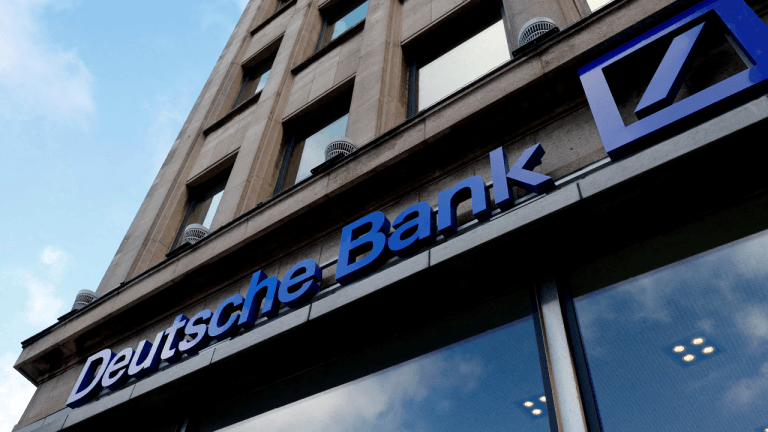
How Effective Market Makers Should Work – Where To Place Orders and How To Manage the Order Book

Market making is a fundamental feature of financial markets, essential for providing liquidity and performing trading. Market makers commit to buying and selling assets at all times, thus forming trading volumes and markets for others to trade efficiently.
Camille Meulien, CEO of Yellow Capital, said,
“Effective market making in the crypto space requires robust risk management, strategic order placement, constant market monitoring and adaptability. By all the requirements, market makers can enhance their performance, provide better liquidity and contribute to more efficient and stable markets.”
In this article, together with Yellow Capital, we will closely examine the market makers in the crypto and how they should work to be effective.
Why are trading volumes important
Historically, in crypto markets, high trading volumes indicate an active, healthy market with enough liquidity for entering and exiting.
Volumes help in price discovery, indicate confidence in the marketplace and reduce the chances of sharp price variations.
Market makers enable volumes by continually placing both buy and sell orders, aiming to keep the trading operations alive.
What is crypto market making
Market making is the process of strategically providing liquidity for different crypto trading pairs by constantly buying and selling specific assets and creating a healthy trading environment for the organic growth of new traders and investors.
Liquidity is the lifeblood of the crypto market. Without liquidity, markets are empty and inactive.
Being liquid (having liquidity) means that an asset can easily be bought or sold in the market and can be disposed of without experiencing much price change.
MMs (market makers) increase liquidity by managing the order book, at the same time increasing stability in prices and confidence among traders.
Initially, the idea of market making business was to benefit from the bid-ask spread, which is the difference between the buying price (bid) and the selling price (ask).
Evolution of market making
Originally, market makers’ primary profit source was the spread, but with time, crypto market makers switched their attention to different services.
They started providing market making as a service, acting as a middleman for market participants, investing in early stages and assisting crypto projects with token launches and even incubation.
It is safe to say that market makers have become among the most influential and important crypto market participants.
What do market makers really do
Manage bid-ask spread
The bid-ask spread is the difference between the price a buyer will pay (bid) for an asset and the price the seller will take (ask).
Market makers manage the spread to decrease it, build stability and trading volumes, create arbitrage opportunities and sometimes make a profit.
They do this by following the below steps.
Setting the bid and ask prices
Good market makers set bids and ask prices competitively to attract trades while managing risk. They consider current market prices, volatility and trading volume.
For example, during high volatility, a market maker might widen the spread to account for the increased risk of price swings.
Market conditions adaptation
Market conditions can change quickly, and a good market maker must change the orders to fit the prevailing market conditions.
For instance, when the market is generally on an uptrend, a market maker would adjust the bids higher for a competitive edge and lower the asking price just a bit to capture more trades.
On the contrary, he would lower his bids and adjust his asks to control risk in a downtrend.
Order size management
Balancing order size is crucial for market makers. On the one hand, placing too big an order exposes the entity to too much risk at the same time, placing too small an order may not make the liquidity provision business worthwhile to the liquidity provider.
For instance, a market maker might increase order sizes in periods when trading activity is heavy to be able to fill large trades.
The frequency of order updates keeps market makers competitive and actively regulates risk. They use automated trading systems to help adjust orders in real time by changing their price according to market movements.
For example, if the prices have changed due to a significant news item, the system would automatically make necessary adjustments to keep order levels at an appropriate amount.
Manage order book
The order book is a list of buy and sell orders for an asset, organized by price level. It gives the quantity of assets available at each price.
The market depth that an order book reflects regarding how many orders are placed at various price points indicates market sentiment and trading activity.
Crypto market makers are responsible for a proper order book structure and depths to protect the price from high volatility and unwanted actions.
They do this by following the below steps.
Manage order book depth
An order book’s depth is crucial to stabilizing markets. There must be enough orders from buyers and sellers at different price levels.
Market makers, in their endeavor to ensure adequate depth, post orders at various price levels to ensure liquidity always exists. This ensures that there is no massive price swing because of single trades.
Handling large orders
Large orders can have a huge impact on the price when they come into the market. A good market maker will handle this by absorbing those trades with their own orders or by changing the spread to minimize the risk.
For instance, if a large buy order has been placed, the ask price may increase to offset the supply and demand.
Good crypto market making teams must have deep knowledge of market dynamics, strategic order placements and meticulous order book management.
Camille Meulien adds,
“The market makers ensure liquidity and stability in the crypto market by establishing competitive bid-ask prices, maintaining sufficient order book depth and employing advanced algorithms.”
How do market makers manage risks
Hedging strategies
Hedging is extremely important for market makers in terms of risk management. A position too big in one asset might result in financial losses.
For example, a Bitcoin market maker may take up a short position in some Bitcoin Futures contracts if they anticipate prices to fall.
Ask your market maker what hedging strategies they use before signing the agreement. It is important that the strategies align with the client’s interests.
Real-time market monitoring
Your MM should constantly monitor market conditions for better and more efficient opportunities. The market maker tracks price movement, trading volume and news events to adjust its strategies.
These days, it is almost impossible to do without proficient tools and indicators. For instance, during high volatility, it may be prudent to widen spreads and reduce order sizes in the name of risk management.
Ask your market maker what tools and indicators they use. You must evaluate their efficiency, relevancy and professionalism.
What is algorithmic market making
Nowadays, almost all market making is algorithmic. That means that for matching and creating orders, market makers use trading algorithms or trading bots to execute faster and more efficient order placement and management.
Another benefit is that algorithms can execute trades based on predefined criteria, adjusting real-time orders to stay competitive and manage risk.
Here are the most common mistakes made by crypto market makers.
Insufficient risk management
Due to extreme volatility, crypto market making involves significant risks. Poor risk management can lead to substantial losses.
This includes failing to hedge positions adequately or not adjusting strategies in response to market changes.
Example A market maker might fail to hedge their exposure to a sudden drop in price, resulting in significant losses.
Overly tight spreads
Setting bid-ask spreads too tight can lead to losses. While a tighter spread attracts more trades, it also increases the risk of adverse price movements.
Example During a market crash, tight spreads might result in market makers buying high and selling low, leading to losses.
Insufficient capital
Market makers need substantial capital to provide liquidity effectively. Underestimating the required capital can lead to an inability to maintain consistent order book depth, reducing their effectiveness and profitability.
Example n undercapitalized market maker might run out of funds to place new orders during periods of high trading activity.
Ignoring market signals
Market makers must continuously monitor market conditions and adjust their strategies accordingly. Ignoring market signals, such as news events or shifts in trading volume, can lead to poor performance.
Example Failing to adjust orders in response to a major regulatory announcement can result in significant losses due to sudden market movements.
Relying too heavily on automation
While algorithmic trading is a core of market making, relying too heavily on automation without human supervision is too risky. Algorithms do not always adapt correctly to market conditions or unexpected events.
Example he algorithm keeps placing orders based on outdated data during a flash crash, leading to losses.
Poor order placement
Inefficient order placement strategies such as placing orders too far from the mid-market price, not updating them frequently or needing more support orders can reduce the market maker’s competitiveness and profitability.
Example Orders placed too far from the current market price might not get filled, resulting in missed trading opportunities.
Underestimating transaction costs
Transaction costs, including fees and slippage, can significantly impact performance. Underestimating these costs can lead to overestimating potential profits and burning client’s funds.
Example A market maker might ignore the cumulative effect of exchange fees on thousands of small trades, leading to drained inventory.
Involvement in shady schemes
Some market makers get involved in things like wash trading or PnD (pump and dump) to maximize their profit. They take advantage of the lack of regulations related to crypto market making and use their expertise and toolset to participate in these operations.
The risk behind that is tremendous not just for the market maker but also for his clients.
Example A few weeks ago, one of the biggest crypto market makers was accused of wash trading and creating fake volumes on Binance. Although it is hard to forecast how it will end, the possibility of regulators’ involvement, in this case, is growing.
What are the risks of a partnership with a market maker
Interests are not aligned with the client’s
Most market makers, whether using a loan or retainer model, put their interest and profits as the cornerstone. They focus on short-term profit, ignoring a project’s goals.
These types of partnerships are a loss for the clients because the MM will first protect their profits and interests.
Eventually, the project might end up being unable to continue delivering the product and get to the verge of being shot down, with investors despairing because of the devaluation of the investments.
Example A crypto project loaned tokens to a market maker with the obligation to receive them back within a year or pay them back in stablecoin but the market maker sold the loaned token, bringing the price to an all-time low, bought back tokens to return them, meanwhile destroying investors’ confidence and breaking the project’s long-term goals and dreams.
Here’s how it is supposed to be done.
Camille Meulien said,
“Most market makers focus on short-term profit and their own profit while we focus on the long-term and project profit first.”
According to Yellow Capital, only market makers who focus on the long term are able to deliver profit first to the project. When the project is built, everybody profits in the long term.
By being greedy early, market makers kill the project and community, Yellow Capital concludes.
Not creating the market
By having irrelevant KPIs, market makers do not deliver what benefits the project in the long term.
Market making is about creating markets, attracting traders, and building organic volumes and arbitrage opportunities.
Example A market maker offered trading volumes and price ranges as KPIs. By manipulating markets, KPIs are easily achievable, but the project doesn’t attract new traders and investors in the long term, keeping adoption and growth potential at low levels.
Here’s how it is supposed to be done.
Camille Meulien said,
“We focus on creating a market, which is what market making is all about, and not irrelevant KPIs that mean little regarding attracting traders to your market.”
She adds that other so-called ‘market makers’ are destroying the markets by using options strategies that are counterproductive to the project.
Remember market making is a highly sensitive and extremely important element of any crypto business.
It is not just about bringing volumes it is also about the future of your company by building a treasury and healthy markets.
Your service provider must understand and follow your needs, create favorable trading conditions and ensure their strategies are win-win for both sides.
Yellow Capital must be the first company to contact if you are looking for the best market making partner.
They have navigated crypto markets since 2018, using unique business models, tailored services and custom-made trading strategies.
Formed pursuing the vision of helping Web 3.0 projects achieve their ambitions of turning ideas into sustainable businesses, Yellow Capital makes sure that their interests are always aligned with partners’ goals.
Visit the website for more information or follow Yellow Capital on X.
This content is sponsored and should be regarded as promotional material. Opinions and statements expressed herein are those of the author and do not reflect the opinions of The Daily Hodl. The Daily Hodl is not a subsidiary of or owned by any ICOs, blockchain startups or companies that advertise on our platform. Investors should do their due diligence before making any high-risk investments in any ICOs, blockchain startups or cryptocurrencies. Please be advised that your investments are at your own risk, and any losses you may incur are your responsibility.
Follow Us on Twitter Facebook Telegram

The post How Effective Market Makers Should Work – Where To Place Orders and How To Manage the Order Book appeared first on The Daily Hodl.
Go to Source
Author: Sponsored







